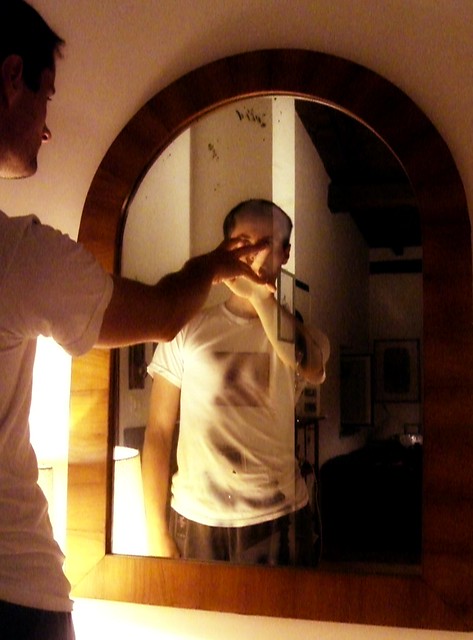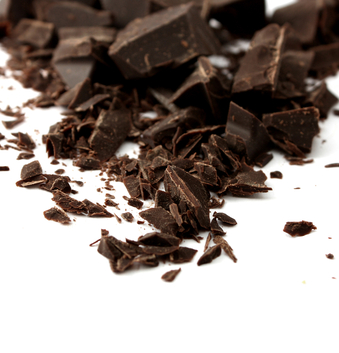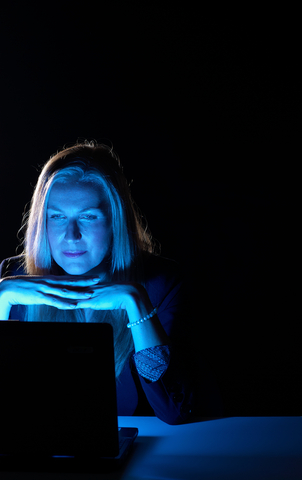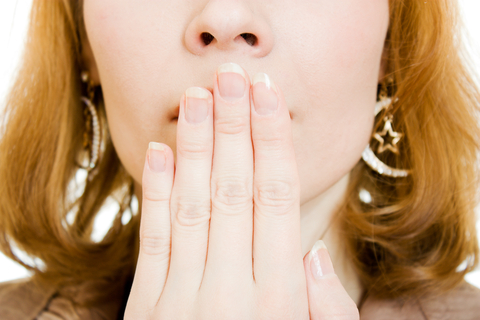Newsflash! Two a day diet drinks habit might be harming your heart!
Are you a fan of diet drinks? Do you consume them because they help to keep overeating at bay? Newsflash: you may want to reconsider how diet drinks are actually affecting your health.
Ironically, despite their promise to help you lose weight (and in turn, become healthier) previous studies have linked diet drink consumption to weight gain and an increased risk for metabolic syndrome. Now, researchers presenting at the American College of Cardiology Annual Meeting report that postmenopausal women who consume two or more diet drinks daily may up their risk for cardiovascular disease by as much as 30%. What’s more, the data suggest that the risk from dying from a heart-related event (e.g. heart attack or stroke) might be upped by as much as 50%.
Dr. Ankur Vyas of the University of Iowa evaluated reported dietary habits by almost 60,000 women from the Women’s Health Initiative Observational Study, who at the study’s start, had no signs of preexisting heart disease. While the majority consumed up to three diet drinks a month, about 5% of the women reported drinking two or more daily. And of these women, 8.5% developed heart disease or a composite of different events such as a heart attack or stroke.
The researchers note that increases in these events also occurred in the other groups but in fewer women, so for all intents and purposes, the upped risk is a modest one. Still, even when they factored in other things that might cause heart disease such as BMI, smoking or high cholesterol, women who drank the most diet beverages still had a greater likelihood of developing a heart related event or dying from such event.
It’s too early to say for certain whether or not these findings will bear out closer scrutiny. And, increasingly, experts recommend that people choose the real deal over artificial. However, sugar sweetened beverages may soon be blacklisted across the board. Word to the wise: water trumps diet drinks every time.
Read MoreGaining weight at the speed of (night) light
“Bodies have their own light which they consume to live: they burn, they are not lit from the outside.”
― Egon Schiele
There are those of us who crave the light. And those who crave the darkness. Yet, disrupting the yin/yang that exists between the balance that defines the framework for these differences can wreak significant havoc on the body. In a review published online this week in Endocrine Reviews, Ohio State researchers have examined the effects of night light on the body’s circadian clock. And the results are not pretty.
Obesity has become a global problem and in the U.S. alone, numbers of people who qualify as obese (BMI>50) increased by as much as 75% between the years 2000 and 2005. Concurrent with this change has been the explosion in the use of electric light at night, which has bolstered the ability to self set the sleep/wake cycle. And while economically, this may be an attractive proposition, light at the wrong time of day, that is, light that disrupts the body’s natural circadian rhythm can lead to cancer, disrupt sleep, interfere with mood, impair cognition and perhaps most importantly, interfere with the metabolism. Data show that the increase in exposure to light tracks pretty closely to the eruption of global obesity and metabolic disorders. Moreover, even dim light (think: light from mobile devices) has been shown to alter circadian genes, especially those involved in nutrition and metabolism, affecting hunger and appetite. More troubling is the fact that the researchers say that this disruption is reciprocal, so, while interfering with the body’s circadian rhythm can lead to obesity, the metabolic changes that results in turn, alter circadian rhythms. This endless loop may be a key reason why so many of us are gaining weight. Other key factors include disruption in melatonin levels (which affects sleep pattern) and cortisol levels (related to stress), and unfortunately, these changes can occur through exposure to low light levels at the wrong time of day.
For all intent and purposes, modern society is a 24 hour society. Researchers say that over 99% of the US and Europe is exposed to urban light pollution and many people bring light into their homes at night, watch TV late night and use computers just prior to and in bed. They add that two-thirds of the population experience social ‘jet lag,’ a term coined to describe the habit of following different sleep schedules on the weekdays and weekends. And, the issue is an environmental one as well; the health of plants and animal species are affected by artificial light at night.
The solution may be to start to bring back the dark . Use black out curtains or shades, turn off hallway lights and keep the computers and phones out of the bedroom. Try to maintain a regular sleep schedule. And be mindful of when and how often you are eating at ‘irregular hours.’ Mostly, however, pay attention to your habits and see what changes can be made. There are many factors that contribute to obesity but it appears that for many of us, one of the most important might be nighttime light exposure.
As Schiele so aptly points out, we have our own light that does not require outside illumination, at least not at certain times of the 24 hour period that makes up a healthy, balanced life.
Read More
Mirror, mirror, on Guyside’s wall…
 I recently came upon a photo of me that was about 10 years old or so. I didn’t think much of it, but then I took a closer look to see if I could spot the telltale signs of aging in it. It was hard. I’m a little heavier now than I was then (about 192 compared to about 185); there are more than a few gray hairs in my facial hair, but not much on top; I couldn’t see the advance of wrinkles.
I recently came upon a photo of me that was about 10 years old or so. I didn’t think much of it, but then I took a closer look to see if I could spot the telltale signs of aging in it. It was hard. I’m a little heavier now than I was then (about 192 compared to about 185); there are more than a few gray hairs in my facial hair, but not much on top; I couldn’t see the advance of wrinkles.
Trust me. I am not Dorian Gray. But I think that guys are able to see exactly what they want to see in mirrors or photographs. A classic Canadian folk song called “Lies” is about a woman confronting her face in the mirror, with one couplet: “She shakes off the bitter web she wove / Gently puts the mirror face down by the stove.” From the outside, at least, I think women look at themselves and see flaws, while men look at themselves and see an idealized version of themselves.
I don’t think I have to argue that for many women, body image is a big problem. But I want to argue that the male tendency to ignore reality isn’t an asset. If we “can’t see” the toll that time and our choices take on our body, then men could be opening ourselves up to health issues.
I was recently part of an online discussion where a mother was talking about how quickly her daughter would look at herself and wonder if she was too fat (this in elementary school!), while the girl’s quite-average-shaped younger brother would come to his mother and demand she demonstrate awe at his huge biceps and muscles! While I suspect that everyone in adolescence is hypersensitive to body issues (why don’t my boobs look like hers, why can’t I get rid of these pimples, why am I 6’1″ and weigh under 140 — that last one was me, by the way), it’s disconcerting to think that even in early childhood, there are already seeds of dissatisfaction with who we are, and the willingness to rely on our fantasy vision of ourselves rather than to simply acknowledge reality.
Since the 1980s, when I was thin enough, as my dad used to say, “to have to run around in the shower to get wet,” I’ve put on about 55 pounds. I needed some of that. But maybe not all of that. Even my idealized eyes can see that. I’ll never be a bodybuilder, never be “musclebound.” Given the raw material, I would have to either become an utter gym rat, or I’d end up using dangerous methods like steroids to achieve some level of muscularity. And I’m not willing to risk my health for an image. I like feeling fit, I like feeling toned. But for me, the “Men’s Health” six-pack or the arms of a pro wrestler aren’t worth it.
But the question then becomes: if you recognize the need for change, then how to make that change. Next week, I’ll be talking about cosmetic surgery for men.
(photo CC-licenced by Flickr user Michele di Trani)
Read MoreMajority rule? Time to express yourself
Do women have an equal voice in groups?
Apparently the answer is no, especially when men comprise the majority at the table. And while this may appear to be trivial, it speaks volumes about what happens when men and women are part of important deliberating bodies, such as Advisory Boards or even political bodies. Who’s influencing whom, for example? Moreover, what can be done about?
I published this post a few years back and all the press about Sheryl Sandberg’s ‘Ban Bossy’ has me thinking that she may have a point. And while I do realize that there are distinctions between leading and being assertive (a point that some might argue the Ban Bossy advocates are missing), what is true is that taking the backseat can be a costly proposition.
Writing in the American Political Science Review, Assistant Professor of Political Science (Brigham Young) Christopher Karpowitz suggests that while more than 100 countries have mandated a 30% minimum quota for women on governing or political bodies, their voices are still not being heard and gender inequality is the rule, not the exception. Yet, the reason for this may be more complicated than at first glance; it seems that women don’t always speak up when given the opportunity. Toward that end, Karpowitz adds that “girls and boys are socialized to different gendered cultures of interaction and they carry these implicit scripts of behavior with them into adulthood.” Consequently, in a meeting where men dominate in number, they may also dominate in voice as the dynamic in the room shifts towards assertion, competition and dominance versus a spirit that is often considered feminine, i.e. cooperation, intimacy and inclusion.
Karpowitz and his colleagues point out that this paradigm of exclusion actually shifts when groups must come up with an unanimous decision. In fact, when the researchers challenged 94 groups of men and women to discuss the best way to distribute money that they theoretically earned together, they found that In the majority of cases and regardless of how proportioned the gender make up was, women spoke less than 75% of the time that their male peers spoke. When they were the minority, women consistently spoke less and were perceived as less influential by the group. However a shift took place when the majority rule was thrown out the window.
There’s an old say that ‘time is money.’ In the case of decision making, it appears that how many timse one voices one opinion is more important than how many opportunities one is provided with to do so. The underlying rule of thumb is that the rules are more stringent and the outcomes have a greater stake. If you wish to play a role, speak up. It’s essential, not only for equality but also, because women bring “unique and helpful perspectives to [issues] under discussion.” Karpowitz points out what many of us intuitively know: “We’re not just losing the voice of someone who would say the same things as everybody else in the conversation.”
Read More
Friday NewsFlash: more loco for cocoa, the ‘why’s’ have it!
 Guess what? Research presented at this week’s American Chemical Society Meeting in Dallas appears to demonstrate the reasons why dark chocolate might be good for your health: microbes in your gut.
Guess what? Research presented at this week’s American Chemical Society Meeting in Dallas appears to demonstrate the reasons why dark chocolate might be good for your health: microbes in your gut.
Like many writers, I’ve been reporting on chocolate for some time now and yet, while theories have focused on flavanols, neither cause and effect, or the exact reasons for benefits have been clear. However, Lousiana State University scientists say that good microbes in your gut – lactic acid and a type knowns Bifedobacterium – actually breakdown the antioxidant properties in cocoa (e.g. cathechin and epicatechin), ferment it and produce smaller molecules that are anti-inflammatory. In other words, they are believed to help reverse the body’s low-grade inflammation that leads to heart attack, stroke and other heart-related conditions. The discovery came when the scientists exposed three different cocoa powders to simulated digestion and then fermented the non-digestable materials.
Another related finding is that when prebiotics — carbohydrates that are found in foods like raw garlic or cooked whole wheat flour — are combined with cocoa, namely the small amount of fiber in cocoa, they become like worker bees to further help break down the antioxidant compounds.
Now that we have the why, let’s hope that researchers confirm an actual cause and effect. Right now, they can only confirm an association. But having your dark chocolate and eating it too may be one of the best things you can do for your heart health, at least, in moderation.
Read More








